A gummy smile, where too much gum shows above the upper teeth, can affect your confidence. It’s often due to genetics, a hyperactive upper lip, or how your teeth have grown. Luckily, there are treatments to help reduce a gummy smile and improve your smile’s appearance
Gummy Smile
Google rating score of 4.8 of 5, based on 500+ reviews
What is a gummy smile
A gummy smile, also known as excessive gingival display, occurs when an excessive amount of gum tissue is visible above the upper teeth when you smile. This condition can result from various factors, including genetics, an overactive upper lip muscle, an irregular tooth eruption, or a short upper lip.
Sometimes, the teeth themselves might be small or worn down, causing more gum to show. While primarily a cosmetic issue, a gummy smile can impact your confidence. Fortunately, there are effective treatments available to help reduce the appearance of a gummy smile and improve your overall smile aesthetics.

How to fix a gummy smile
Orthodontics Braces or clear aligners can reposition the teeth and jaws to create a more balanced smile. By adjusting the bite and tooth alignment, less gum tissue may show when you smile. This non-surgical approach is effective for many individuals and can also improve overall dental health.
- Improves Dental Alignment: Corrects misaligned teeth and bite, enhancing overall dental health and function.
- Non-Surgical: TA non-invasive approach that gradually adjusts tooth position without the need for surgery.
- Long-Term Results: Provides lasting improvements in both smile aesthetics and dental health.
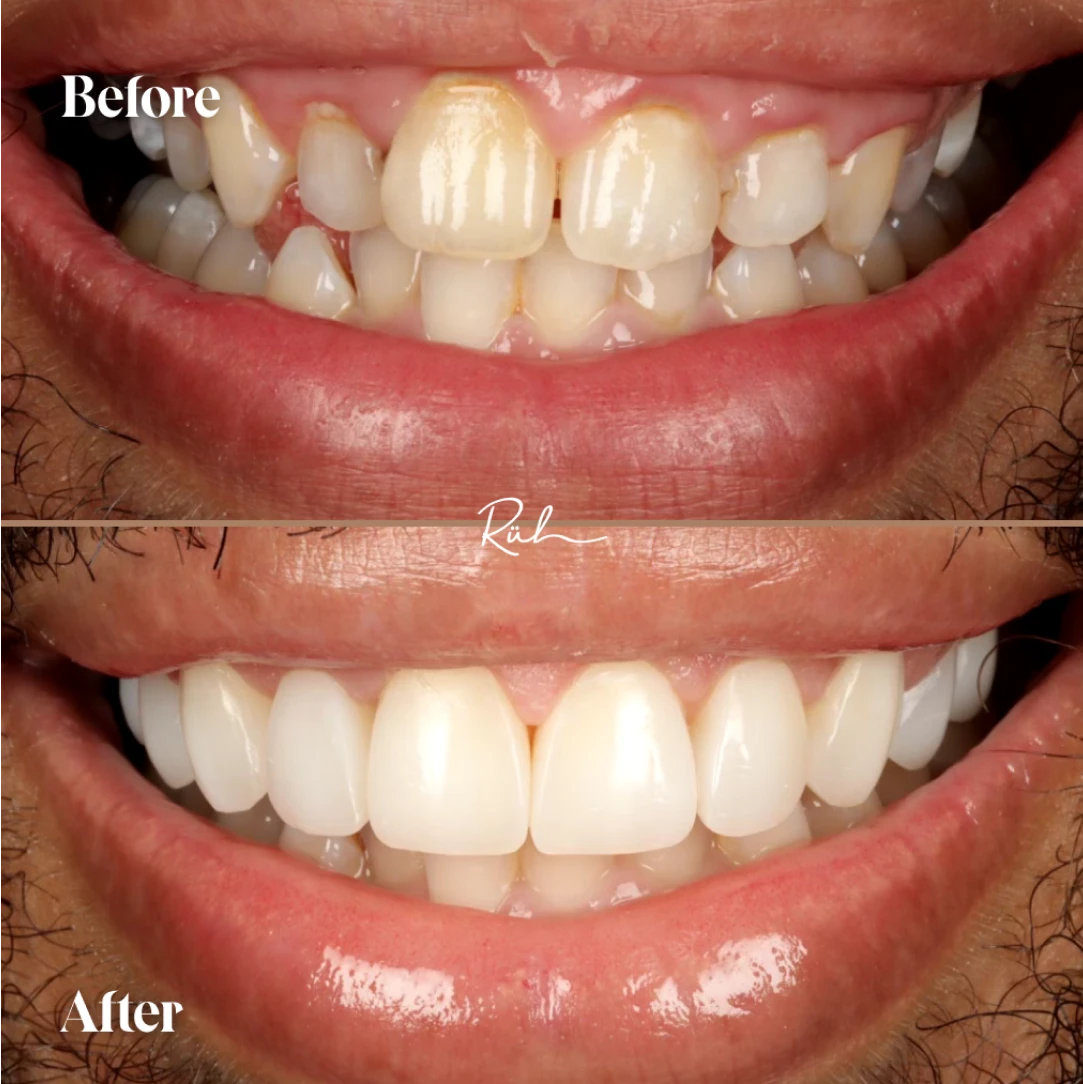
Botox for gummy smile
Botox for gummy smile Botox can be used to relax the muscles of the upper lip, reducing its elevation when you smile. This minimally invasive treatment is quick, with results lasting several months. It’s an excellent option for those seeking a temporary and non-surgical solution.
- Minimally Invasive: Involves no surgery, with minimal discomfort and quick recovery time.
- Quick Procedure: Typically takes only a few minutes, with results visible within days.
- Temporary Solution: Allows patients to test the aesthetic change without a long-term commitment, as effects last several months.
Crown Lengthening
Crown Lengthening A dental procedure known as crown lengthening can reshape the
gum tissue and bone around the teeth. This surgery exposes more of the tooth’s surface, creating a balanced smile. It’s a permanent solution that can also improve oral health by making teeth easier to clean.
- Permanent Solution: Offers long-lasting results by reshaping gum tissue and bone.
- Improves Oral Health: TMakes teeth easier to clean, reducing the risk of gum disease and tooth decay.
- Enhances Smile Aesthetics: Exposes more of the tooth surface, creating a more balanced and attractive smile.
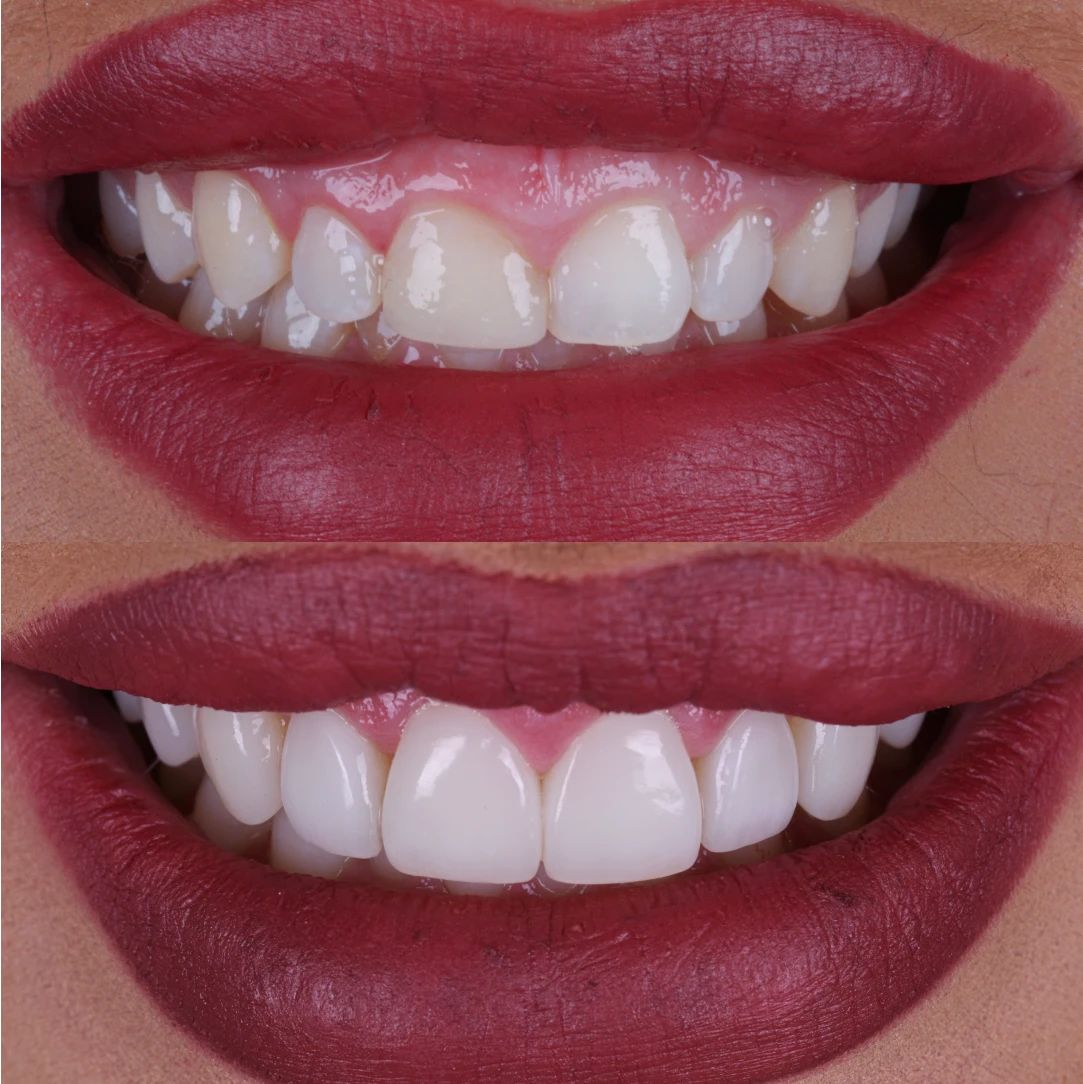
Laser Gum Contouring
Laser Gum Contouring Laser gum contouring is a minimally invasive procedure that uses a dental laser to remove excess gum tissue. This quick procedure results in minimal discomfort and a short recovery period, making it a popular choice for many patients.
- Minimally Invasive: IUses laser technology for precise and gentle tissue removal, minimizing discomfort.
- Quick Procedure and Recovery: TFast treatment with a short recovery time, allowing patients to resume normal activities quickly.
- Enhanced Smile Appearance: Achieves immediate and noticeable improvements in gum-to-tooth ratio, enhancing smile aesthetics.
before and after
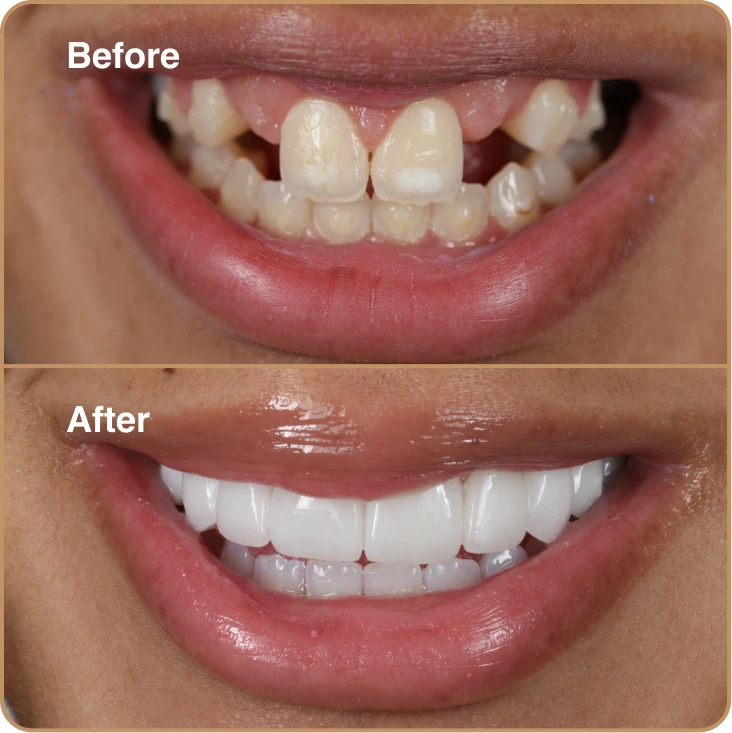
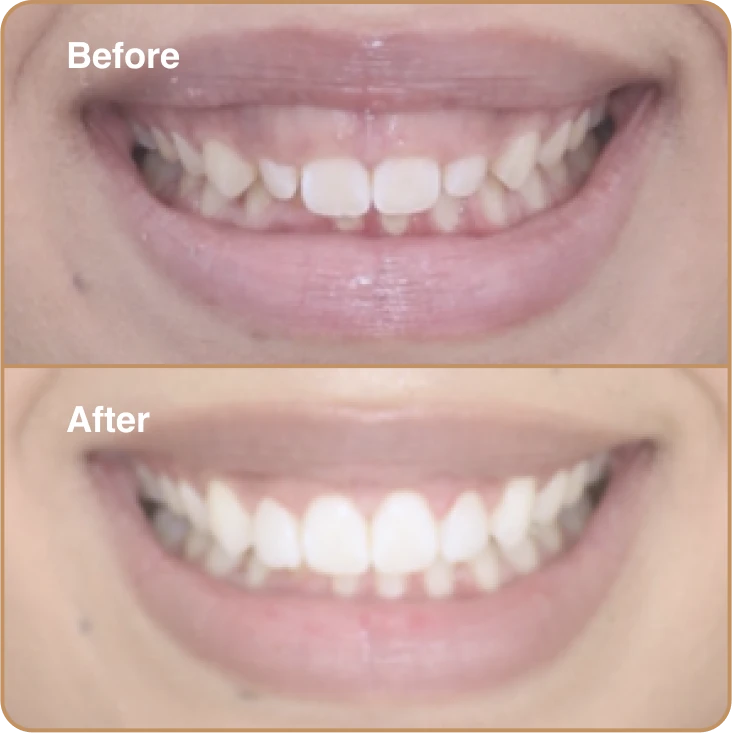
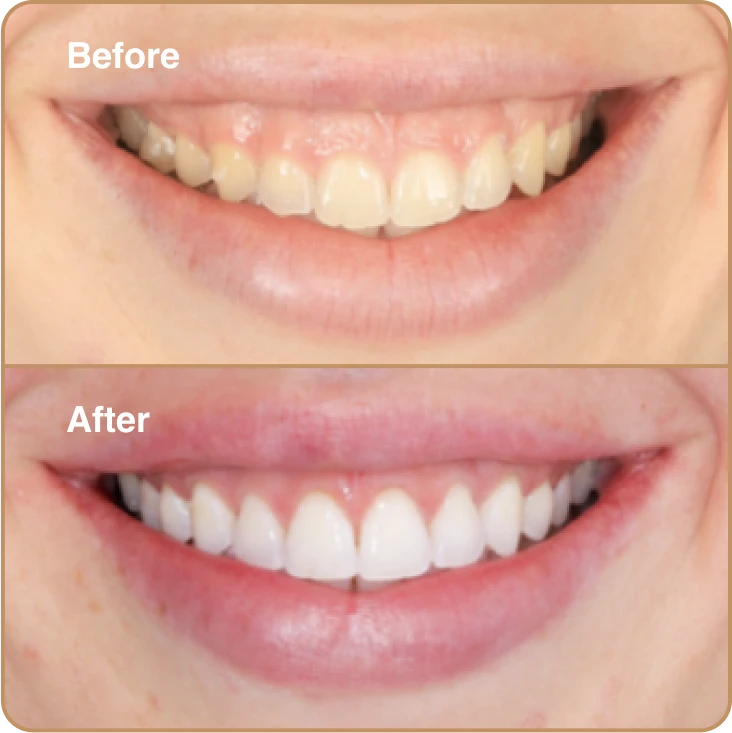
Meet the Dentist team

DENTAL IMPLANT EXPERT
BDS (Hons) MJDF RCS Eng PgDip in Advanced Implant Dentistry (NYU) PgCert Clinical Teaching RCGP
| GDC No: 230002

EDUCATOR | PERIODONTIST
BDS MFDS RCS (Ed),
MClinDent (Periodontology), MPerio RCS (Ed) | GDC : 228287
Gum contouring vs
Crown lengthening
- Need a dental crown but do not have enough tooth structure above the gum line to support it.
- Have teeth that appear too short or a "gummy" smile.
- Require access to decayed or damaged areas below the gum line for proper dental treatment.
- Have fractured teeth below the gum line that need restoration.
- Are experiencing periodontal disease and need to reduce gum pockets.
- Have a "gummy" smile, where excessive gum tissue makes the teeth look short.
- Have an uneven gum line that affects the appearance of their smile.
- Are in good general and oral health, with no active periodontal disease.
- Have teeth that appear too short due to excess gum tissue.
- Desire to improve the symmetry and aesthetics of their smile.
Gummy Smile FAQ
What is a gummy smile?
A gummy smile, also known as excessive gingival display, occurs when a disproportionate amount of gum tissue is visible above the upper teeth when smiling. This can affect the aesthetics of a smile and may make teeth appear shorter.
What causes a gummy smile?
Several factors can cause a gummy smile, including genetics, teeth that did not fully emerge during development, overgrowth of the upper jaw, a short or hyperactive upper lip, and conditions such as gingival hyperplasia.
What are the treatment options for a gummy smile?
Treatment options vary based on the cause and severity: gum contouring (gingivectomy) to remove excess gum tissue; crown lengthening to reshape the gum line and sometimes remove bone; orthodontics (braces or Invisalign) to reposition the teeth and sometimes the jaw; Botox injections to reduce the movement of a hyperactive upper lip; surgical lip repositioning to adjust the position of the upper lip; and orthognathic surgery to correct jaw abnormalities.
What is gum contouring and how can it help with a gummy smile?
Gum contouring involves reshaping the gum line by removing excess gum tissue. This procedure can create a more balanced and aesthetically pleasing smile by exposing more of the teeth.
What is crown lengthening and how can it help with a gummy smile?
Crown lengthening is a procedure that removes gum tissue and sometimes bone to expose more of the tooth structure. This can reduce the appearance of a gummy smile and prepare the teeth for restorations like crowns or veneers.
How does orthodontic treatment help with a gummy smile?
Orthodontic treatments like braces or Invisalign can help reposition the teeth and, in some cases, the jaw to reduce the appearance of a gummy smile. This can also improve bite alignment and overall oral health.
What is the role of Botox in treating a gummy smile?
Botox injections can be used to relax the muscles of a hyperactive upper lip, preventing it from rising too high when smiling. This is a non-surgical, temporary solution that needs to be repeated every few months.
What does surgical lip repositioning involve?
Surgical lip repositioning adjusts the position of the upper lip by creating a new attachment point closer to the gum line. This prevents the lip from lifting too high and exposing excessive gum tissue.
When is orthognathic surgery necessary for a gummy smile?
Orthognathic surgery is considered for severe cases where the underlying cause is related to jaw structure. This surgery involves repositioning the upper jaw to reduce gum exposure and improve bite alignment.
What are the benefits of treating a gummy smile?
Treating a gummy smile can enhance aesthetics by creating a more balanced and attractive smile, improve confidence by boosting self-esteem in social and professional settings, and promote better oral health by facilitating easier cleaning of teeth and gums, reducing the risk of periodontal disease.
What are the risks associated with treating a gummy smile?
Risks include infection from surgical procedures, some bleeding (though excessive bleeding can occur), increased sensitivity of teeth to hot and cold, minor scarring from surgical procedures, and the potential for the gummy smile to return over time.
How do I prepare for treatment of a gummy smile?
Preparation involves scheduling a consultation with a dentist or periodontist to discuss your concerns and treatment options, providing a complete medical and dental history, and following any specific pre-procedure instructions given by your dentist, such as avoiding certain medications or foods.
How long is the recovery time for gummy smile treatments?
Recovery time varies based on the treatment. Gum contouring and crown lengthening typically require a few days to a week for recovery. Botox injections involve minimal to no downtime. Surgical lip repositioning generally requires about 1-2 weeks for initial healing. Orthognathic surgery can take several weeks to months for full recovery.







